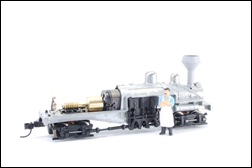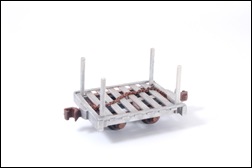All has cooled down now and I have been able do some work on the HOn30 Shay. First of all, I have changed the diamond stack to ensure a nice and sturdy fit. Secondly, I have modeled the headlight … it’s a bit larger than the ones on the Mapleton Shays, because it has been based on the headlight of the Joe Works Shay.

And last but not least, I have modeled the sides of the frame to fit the HOn30 profile. The parts have been ordered from Printapart again and they just arrived a couple of days ago. As you can see from the pictures in this post, I just couldn’t resist fitting them to the actual Atlas Shay body. I am quite pleased with the result already and both the diamond stack and the headlight will remain as they are.




